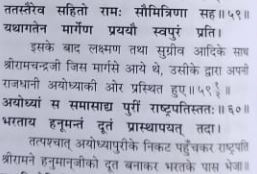Faizan Mustafa's claim about अयोध्या (ayōdhyā), संस्कृत (Sanskrit) and Indigenous sources: A response
Faizan Mustafa: "Before 16th century there is no single Sanskrit or indigenous Indian account which either treats अयोध्या (ayōdhyā) as holy and sacred because of birth of Lord राम (Rāma) or says that there was some जन्म-स्थान (janma-sthāna) which people used to visit"
Mahābhārata (Bhandarkar Oriental Research Institute critical edition)
ततस्तैरेव सहितो रामः सौमित्रिणा सह
यथागतेन मार्गेण प्रययौ स्वपुरं प्रति
अयोध्यां स समासाद्य पुरीं राष्ट्रपतिस्ततः
भरताय हनूमन्तं दूतं प्रस्थापयत्तदा (3.275.58-59)
यथागतेन मार्गेण प्रययौ स्वपुरं प्रति
अयोध्यां स समासाद्य पुरीं राष्ट्रपतिस्ततः
भरताय हनूमन्तं दूतं प्रस्थापयत्तदा (3.275.58-59)
1. Rāmāyaṇa in the Aṣṭādaśavidyā Itihāsa Mahābhārata
2. Rāghava in the Aṣṭādaśavidyā Itihāsa Mahābhārata
Diana Eck: "The careful historical and textual work of scholars has placed the beginnings of the actual worship of Lord Rāma in Ayodhyā in the eleventh or twelfth century C.E." (Kindle location (7994 of 11569)).
Eck cites Bakker (Bakker, Hans. Ayodhyā. Groningen: Egbert Forsten, 1986), who has in turn turned to (amongst other sources), Agastyasaṃhitā. Now while there are claims which assert that Bakker's estimate is extremely conservative, Bakker's estimate should be sufficient to undermine Mustafa's assertion.
While, as seen above, Mustafa's assertion comes under severe stress even within the Eck-Bakker paradigm, for a critical review of Eck's work, from what can perhaps be not inappropriately characterised as an 'Indic' lens, see Abhinav Agarwal's review of Eck's India: A Sacred Geography.



Comments